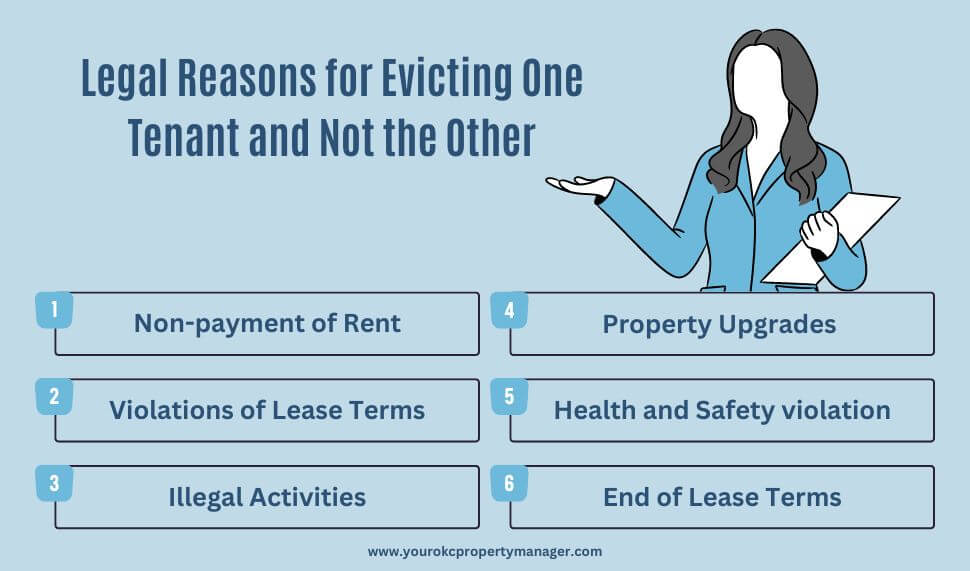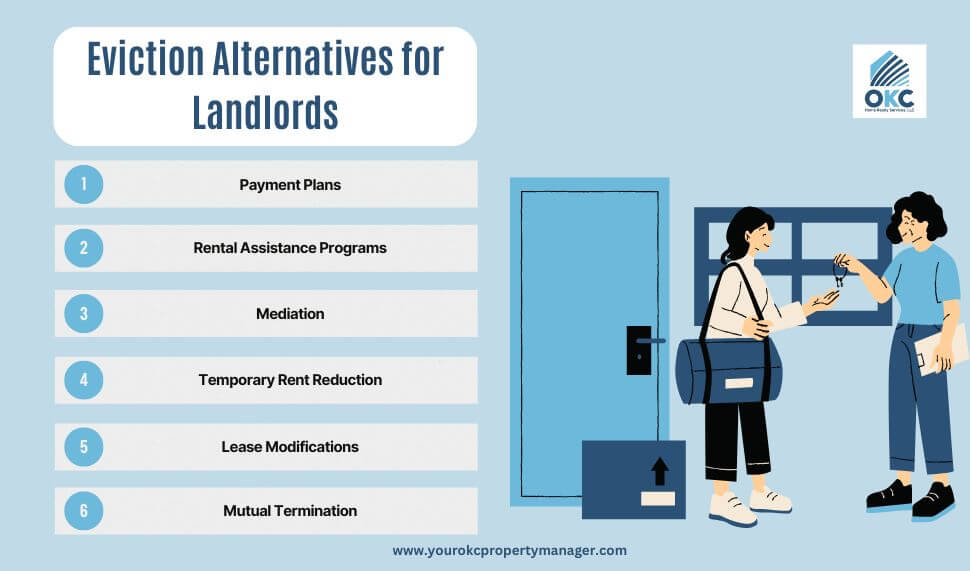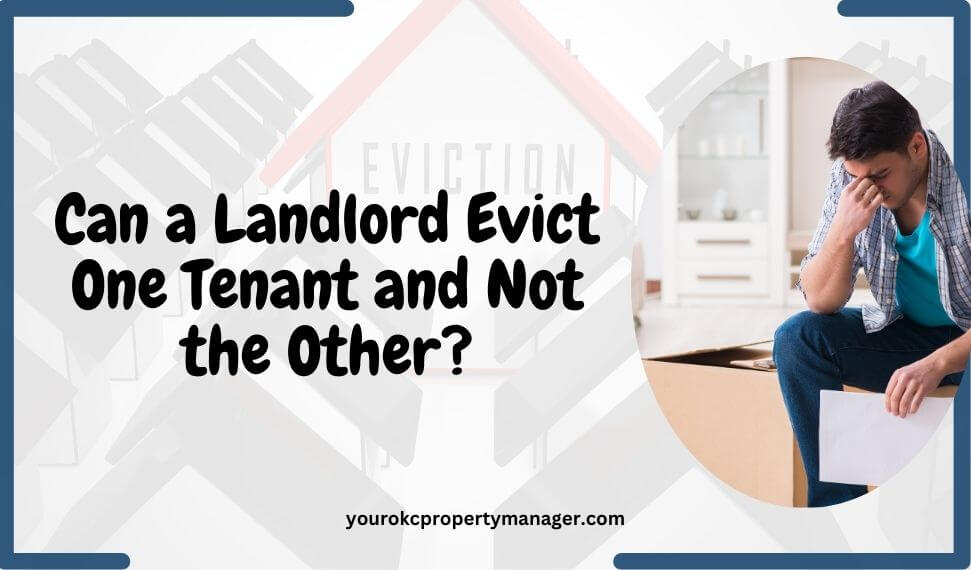Have you ever leased your property to multiple tenants at once? If so, you must have faced problems such as evictions when dealing with a bad tenant. I know this scenario often generates confusion and concern among tenants and landlords due to its legal, ethical, and practical considerations. I have seen many rental property owners who were in a dilemma about evicting just one tenant without impacting others.
In rental properties with multiple tenants, the type of tenancy (joint or separate) determines the feasibility and legality of selective eviction. Joint tenancies, where all tenants share equal responsibility for the lease, present unique challenges compared to separate tenancies with individual leases. Understanding these distinctions is essential for both parties to navigate the legal landscape effectively.
Eviction is a serious process with significant implications for all involved. Landlords must adhere to specific legal requirements and procedures, while tenants have protected rights that must be respected.
Through this article, let’s understand whether a landlord can evict one tenant and not the other by exploring tenancy types, eviction grounds, legal framework, and tenant protections.
Note: According to Attorney Omar Zambrano, as of August 2024, the United States has experienced a significant surge in Eviction rates, which has risen by 106% compared to previous months.
Types of Tenancies to Understand
As we are uncovering the shades of eviction practices, it’s better to understand the distinction between the types of tenancies (i.e. joint and separate). These types of tenancies have different meanings and values, which can affect the legal eviction process. These tenancies are the foundation of a smooth landlord-tenant relationship.
Here are the types of tenancies which we need to understand:
Joint Tenancies
In a joint tenancy, two or more tenants share a single rental agreement. This means that all tenants are collectively responsible for the entire lease and the property. Here are some key points about joint tenancies:
- Shared Responsibility: All tenants are equally responsible for paying the rent and maintaining the property. If one tenant fails to pay their share, the others must cover it to avoid lease violations.
- Equal Rights: Each tenant has equal rights to the property, including the right to live there and the responsibility for any damages caused.
- One Lease: The lease is a single document that names all the tenants. It mainly requires a decision to terminate the lease, which affects all tenants, not just one.
- Eviction Challenges: Evicting one tenant in a joint tenancy is complex because the lease covers all tenants equally. If a landlord wants to evict one tenant, they generally need to take action that affects the entire lease, potentially impacting the other tenants.
Separate Tenancies
In a separate tenancy, each tenant has their own individual rental agreement with the landlord. This means each lease is a separate contract, and each tenant is responsible for their own obligations. Here’s what you need to know about separate tenancies:
- Individual Responsibility: Each tenant is responsible for their own rent and lease terms in a separate lease agreement. If one tenant fails to meet their obligations, it does not directly affect the other tenants.
- Distinct Agreements: Each lease agreement is independent, so the terms and conditions apply only to the tenant who signed it.
- Separate Rights: Each tenant has their own rights to their specific rental unit, and their actions or failures to act do not automatically affect the other tenants.
- Eviction Flexibility: Evicting one tenant in a separate tenancy is more straightforward because it involves only that tenant’s lease. The landlord can legally remove one tenant without impacting the leases of the others.
Advantages and Disadvantages of Joint and Separate Tenancies
Understanding the pros and cons of joint and separate tenancies is essential for you to manage rental properties. Below following pros and cons points of joint and separate tenancies will help you make informed decisions about lease agreements with your tenants.
Joint Tenancy
- Advantages
- Shared Financial Responsibility: All tenants are collectively responsible for the rent and maintenance costs, which can reduce your financial risk.
- Equal Tenant Rights: Each tenant enjoys the same rights to the property, promoting a sense of community and shared living.
- Simplified Lease Management: A single lease agreement reduces paperwork and streamlines communication with tenants.
- Potential for Higher Occupancy Rates: Group renting can attract tenants looking for shared housing, potentially ensuring quicker lease agreements.
- Disadvantages
- Joint Liability: If one tenant defaults on rent or violates lease terms, you may need to take action against all tenants, complicating your management efforts.
- Complex Eviction Process: Evicting one tenant affects the entire lease, which can be challenging and time-consuming.
- Limited Control Over Tenant Actions: Decisions about the property must be made collectively, which can lead to disagreements and conflicts among tenants.
- Risk of Tension: Disputes between tenants can create a difficult living environment, leading to complaints and increased turnover.
Separate Tenancy
- Advantages
- Individual Tenant Responsibility: Each tenant is solely responsible for their lease, minimizing your risk of non-payment due to another tenant’s issues.
- Streamlined Eviction Process: You can evict a tenant without affecting others, making legal processes more straightforward and manageable.
- Greater Control Over Tenant Management: Independent leases allow you to tailor agreements to each tenant, enhancing your ability to address specific situations.
- Reduced Conflict: With separate leases, tenants are less likely to be affected by each other’s actions, leading to a more stable living environment.
- Disadvantages
- Higher Costs for Tenants: Individual leases may lead to higher rental rates, which could deter potential tenants from looking for cost-effective options.
- Less Community Cohesion: Separate tenancies might reduce interactions among tenants, leading to a less vibrant community atmosphere.
- Increased Administrative Work: Managing multiple lease agreements can complicate your administrative tasks and increase paperwork.
- Potential for Uneven Living Conditions: Different lease terms may create inconsistencies in responsibilities and conditions, which could lead to disputes.
Legal Reasons for Evicting One Tenant and Not the Other

If you find any of your tenants unfit for the lease, you can evict them while maintaining the lease with the other tenants. However, eviction is a serious legal process that requires valid reasons as specified by law. Understanding the legal grounds for eviction helps both landlords and tenants handle their rights and responsibilities.
For example, in Oklahoma, the landlord can provide 3-5 days of notice to quit to settle unpaid rent, correct the violation, or face eviction.
However, coming to the point of legal reasons for eviction are:
- Non-payment of Rent
- Violations of Lease Terms
- Illegal Activities
- Property Upgrades
- Health and Safety violation
- End of Lease Terms
Understand Legal Requirements and Procedures
Eviction is a legal process that must be handled correctly to ensure fairness and compliance with the law. However, if they are Section 8 tenant, you need to be extra careful with the Section 8 eviction process to avoid legal consequences. Thus, both landlords and tenants need to understand the essential requirements and procedures to handle this process effectively.
Here’s a clear brief of the legal requirements and steps involved in eviction:
Reasons for Eviction
Before proceeding with the eviction, the landlord needs valid reasons to evict a tenant, such as unpaid rent, lease violations, illegal activities, etc. Each reason for eviction has specific requirements that must be met.
Notice Requirements
Types of Notice:
- Pay or Quit Notice: This notice is given when a tenant fails to pay rent. It demands payment within a specified period or vacates the property.
- Cure or Quit Notice: Issued when a tenant violates lease terms, requiring them to correct the violation or move out.
- Unconditional Quit Notice: This is given in cases of severe lease violations or illegal activities, demanding the tenant leave immediately without a chance to cure the issue.
Notice Periods:
- Notice Periods: Laws vary by location, but landlords must provide a certain number of days’ notice (e.g., 3, 5, or 30 days) depending on the reason for eviction.
- Delivery Methods: Notices can often be delivered in person, mailed, or sometimes posted on the property, depending on local regulations.
Filing an Eviction Lawsuit
If the tenant does not comply with the notice, the landlord must file an eviction lawsuit, also known as an unlawful detainer action. This involves:
Legal Documents:
- Complaints: The landlord needs to file a formal complaint to the court detailing the reasons for eviction.
- Summons: A legal summon letter is used to notify the tenant of the lawsuit and the court date.
Court Process
- Hearing: Both Parties are required to be present at the court hearing by presenting their cases.
- Judgment: If the court rules in favor of the landlord, it means the judgment is issued for an eviction.
Obtaining a Writ of Possession
The landlord must obtain a writ of possession if the court grants the eviction. This legal order authorizes law enforcement to remove the tenant from the property if they do not vacate voluntarily.
Enforcement
- Scheduling: The landlord schedules the eviction with local law enforcement, who will then carry out the removal.
- Execution: Law enforcement executes the writ, removing the tenant and their belongings if necessary.
Tenant’s Rights During Eviction
Landlords also have to keep in mind tenants rights during the eviction process, that are:
Right to Contest
- Tenants can contest the eviction in court and present their side of the case.
Right to Due Process
- Landlords must follow legal procedures, including proper notice and court filings, to ensure the eviction is lawful.
Right to Appeal
- In some jurisdictions, tenants can have certain rights to appeal the court’s decision if they believe it was unfair or incorrect.
Post-Eviction Considerations
After the eviction, landlords need to address the following:
Security Deposit
The landlord must handle the tenant’s security deposit according to local laws, including returning it or providing an itemized list of deductions.
Property Condition
Landlords should inspect and repair the property as needed to prepare it for new tenants.
Why Should You Care For Tenant Protections and Their Rights?
As a landlord, it’s important to understand and respect your tenant’s rights and the protections in place for them, as it varies by location. So, being a landlord, you need to familiarize yourself with local laws and regulations and seek advice from a housing authority or real estate attorney.
However, here are some key points to keep in mind:
- Fair Housing Laws: Landlords must comply with fair housing laws, which prohibit discrimination against tenants based on protected characteristics
- Habitable Living Conditions: Landlords are required to provide tenants with safe and livable housing that meets local building and health codes. This includes ensuring the property has adequate plumbing, heating, and electricity and is free from pest infestations, mold, and other hazards.
- Security Deposits: There are limits on the amount of security deposit a landlord can charge and specific requirements for how and when the deposit must be returned to the tenant.
- Notice of Entry: Landlords must provide reasonable notice (usually 24-48 hours) before entering a tenant’s unit, except in cases of emergency or when the tenant has abandoned the property.
- Termination of Tenancy: Landlords must follow the proper legal procedures and provide adequate notice (often 30-60 days) before terminating tenancy agreements unless the tenant has violated the lease agreement.
- Retaliation Protections: Tenants are protected from retaliation, such as rent increases or eviction, for exercising their rights or reporting issues with the property.
- Accessibility Accommodations: Landlords must make reasonable accommodations for tenants with disabilities, such as allowing a service animal or modifying the rental unit.
Eviction Alternatives for Landlords

As a landlord, eviction should always be the last resort. Before resorting to eviction, consider and try these alternatives that can benefit both you and your tenant:
- Payment Plans: Work with your tenant to set up a payment plan that allows them to gradually catch up on past-due rent. This can help them avoid eviction and maintain their housing.
- Rental Assistance Programs: Refer your tenant to local or state-sponsored rental assistance programs that may be able to cover all or part of their outstanding rent. This can prevent eviction and help the tenant stay in their home.
- Mediation: Mediate with your tenant to find a mutually agreeable solution. A neutral third party can often help facilitate constructive discussions and compromises.
- Temporary Rent Reduction: If your tenant is facing temporary financial hardship, consider temporarily reducing their rent until they are able to get back on their feet. This can help them avoid falling too far behind.
- Lease Modifications: Work with your tenant to modify the lease terms, such as changing the due date or payment schedule, to better accommodate their circumstances and prevent eviction.
- Mutual Termination: As a last resort, you and your tenant may agree to a mutual termination of the lease, in which the tenant voluntarily vacates the property without an eviction on their record.
Evicting One Tenant Conclusion
When evicting a single tenant from a shared rental property, it’s important to understand the type of tenancy agreement in place. Joint tenancies complicate selective eviction, while separate leases offer more flexibility. Landlords must follow specific legal requirements, provide appropriate notices, and consider alternatives to eviction, such as payment plans or mediation. Understanding tenancy types and legal requirements helps landlords manage properties while upholding their obligations and protecting tenants’ rights.
Are you a landlord facing eviction challenges or need guidance on managing tenants? Get expert advice and tailored solutions from OKC Home Realty Services. Contact us today for personalized assistance in managing your rental properties effectively. Visit our website or call us to schedule a consultation.
Evicting One Tenant and Not the Other FAQs
What is the joint tenancy statute in Oklahoma?
In Oklahoma, joint tenancy is a kind of form of co-ownership of the property that gives property owners the right of survivorship.
Can a landlord evict one tenant and not the other in Oklahoma?
In Oklahoma, evicting one tenant and not the other can be challenging as it depends on the local laws and lease specifics, especially in joint tenancy. However, the separate tenancy is more flexible and straightforward because it involves only that tenant’s lease.
Do all tenants need to be evicted if one violates the lease?
Not necessarily. If the lease specifies that each tenant is individually responsible, the landlord can evict only the tenant who violated the lease.
Are there protections for tenants against wrongful eviction?
Yes, tenants have rights that protect them from wrongful eviction. If a tenant believes they are being evicted without just cause, they can contest the eviction in court.
How does the eviction process work for only one tenant?
The landlord must follow local eviction laws, which generally include:
- Providing notice to the tenant being evicted.
- Filing for eviction in court if the tenant does not leave.
- Attending a court hearing if the tenant contests the eviction.

Author
Scott Nachatilo is an investor, property manager and owner of OKC Home Realty Services – one of the best property management companies in Oklahoma City. His mission is to help landlords and real estate investors to manage their property in Oklahoma.
 (
(









